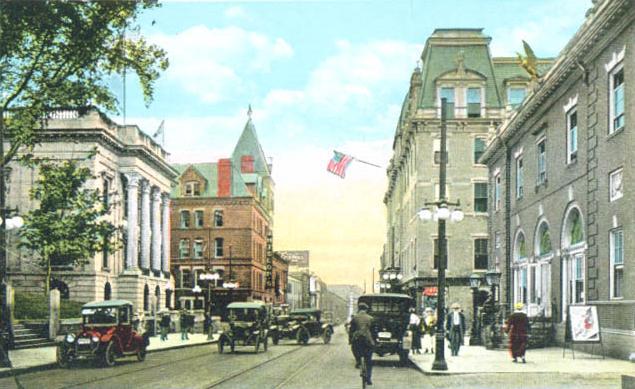Directly across from Harris Place stands the original building that housed one of Connecticut’s first newspaper printing offices – and represents the only colonial architecture on State Street, having been moved to its location after the treacherous fires set by Benedict Arnold and British Troops at the close of the American Revolution
 Not much remains of New London’s early colonial architecture, especially in the Historic Waterfront District running up State Street toward the city’s superior courthouse. On September 6, 1781, local native, and traitor, Benedict Arnold, landed with a force of 800 British and Hessian soldiers to attack Fort Trumbull and Fort Griswold in an attempt to lure General Washington and the French Army from their march on Yorktown, VA.
Not much remains of New London’s early colonial architecture, especially in the Historic Waterfront District running up State Street toward the city’s superior courthouse. On September 6, 1781, local native, and traitor, Benedict Arnold, landed with a force of 800 British and Hessian soldiers to attack Fort Trumbull and Fort Griswold in an attempt to lure General Washington and the French Army from their march on Yorktown, VA.
No reinforcements were sent. A heroic effort was made by the vastly outnumbered defense of Colonel William Ledyard and approximately 160 militiamen, which lasted for about 40 minutes. During the brief battle, local militia managed to kill two British officers and 43 others, while wounding 193 more.
In the end, Colonel Ledyard realized there was no chance for victory and ordered his troops to lay down there weapons and surrender. After suffering “embarrassing” losses, the British showed no mercy, slaughtering Ledyard and 83 other defenseless Americans, leaving another 36 badly wounded.
During the battle, only 6 Americans had been killed and 20 wounded. After wiping out the defending force, Arnold ordered both ends of State Street be set ablaze until the flames met in the middle.
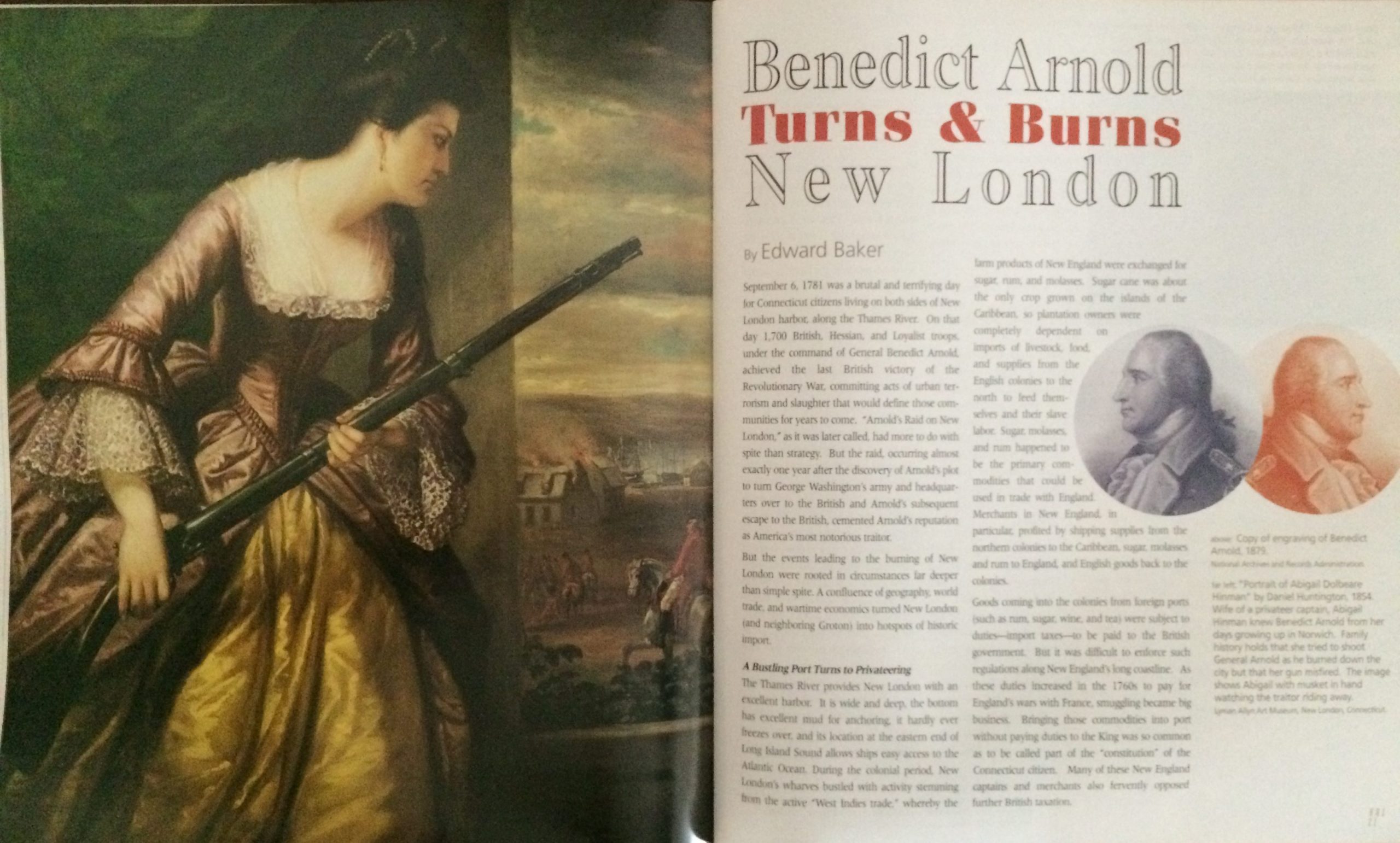
The Connecticut Gazette reported 140 structures were destroyed, including: Homes, shops, and warehouses as well as ships and wharves in the harbor.
New London had been revered as the best deep-water harbor in all of Long Island Sound. As a result, it became a base of American naval operations during the American Revolutionary War. In reality, the fledgling American Navy was not much of a direct, head-to-head threat for the massive British fleet. However, from this strategic location, the small, quick American ships, bolstered by a small armada of privateers, launched covert attacks on unsuspecting British vessels.
This “gorilla-style” tactic of nautical attacks and pirating helped supply the American Army with essential provisions during their campaign against British Rule and taxation without representation.
Of course, the consequence of being a thorn in the side of the British supply chain resulting in a seething hatred towards New London and its citizens by the British Army, whose vengeance was delivered.
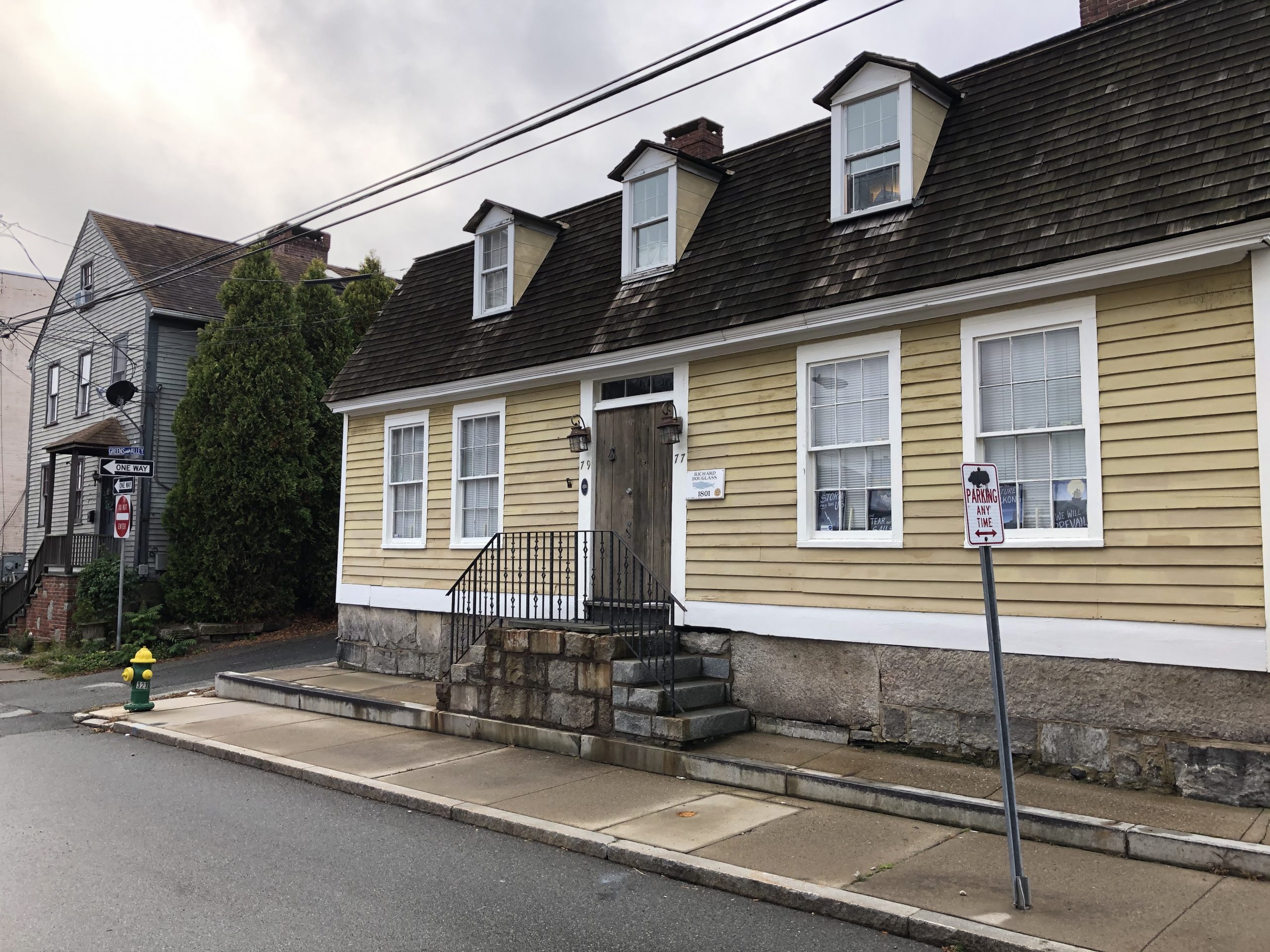
But from the destruction, resilience. Rebuilding. Revitalization. New London would once again grow, prosper, and flourish with the winds of opportunity.
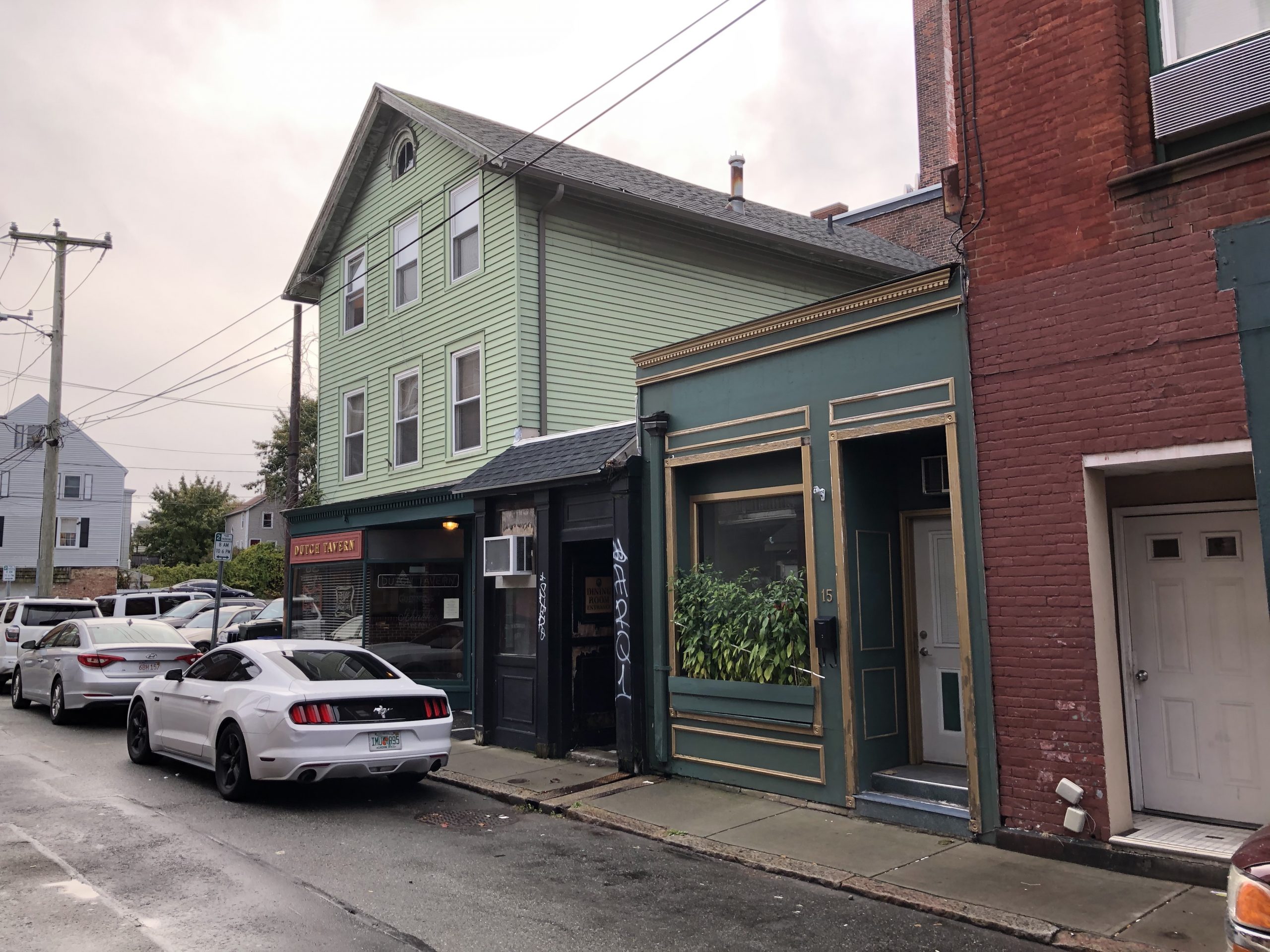
After the fires and devastation, Green Street and “Green’s Alley” immediately became a site of redevelopment for the city. This area of town was the property of Timothy Green, who was known as New London’s Revolutionary Printer.
The gray colonial building more recently called the “State Street Saloon”, originally served as Green’s printing studio and dates back to 1771. In 2006 is was dedicated as part of the Historic Landmark Trail by the New London Historical Society.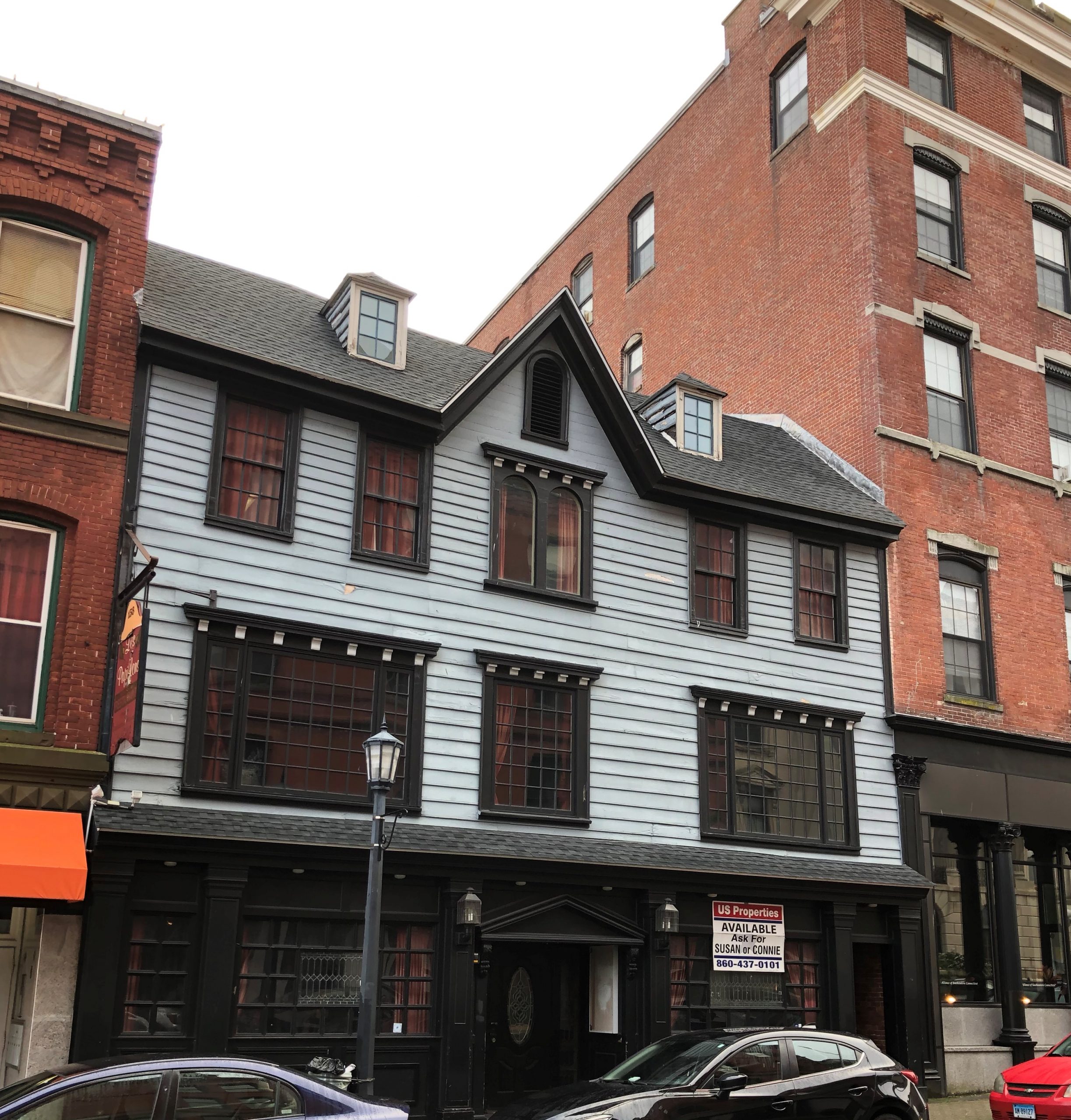
In the mid-1800s, New London’s skyline drastically started to change. Dominated by 4 and 5-story brick and stone structures, the city flourished with economic success in several key industries.
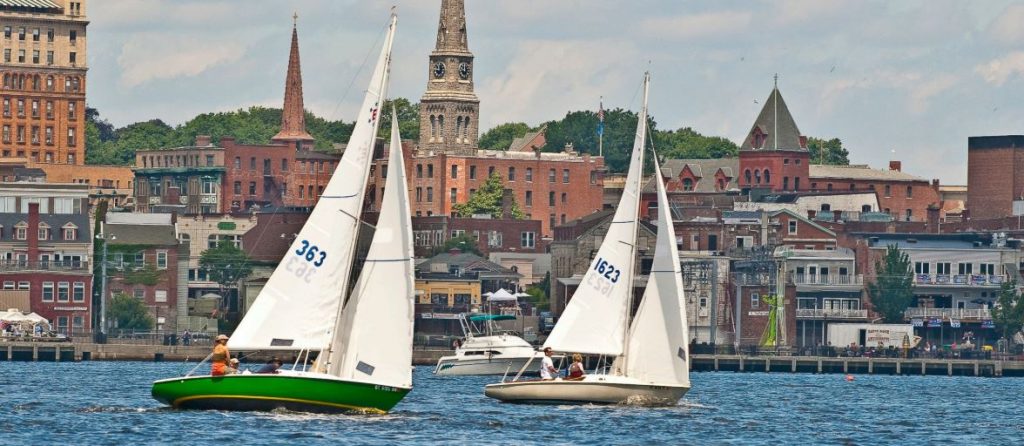
Today, New London is a melting pot of business and community – and is at peace being a safe haven by the sea.
